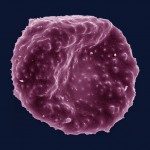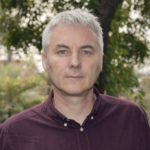Link to Pubmed [PMID] – 18803610
Trop. Med. Int. Health 2008 Nov;13(11):1392-9
OBJECTIVE: To investigate whether the severity of Plasmodium falciparum attack in endemic areas was associated with the multiplicity of infection (MOI) and/or with a particular genotype(s).
METHOD: In two areas of different malaria transmission pattern in Madagascar (Sainte-Marie – mesoendemic and Tsiroanomandidy – hypoendemic) the number and the proportions of msp-2 genotypes within isolates were determined for each patient using a capillary electrophoresis genotyping method. DNA sequencing was performed to identify the msp-2 allelic family of dominant clones.
RESULTS: Eighty six uncomplicated and 33 severe cases were included in Sainte-Marie and 48 uncomplicated and 69 severe cases were included in Tsiroanomandidy. We found no association between the MOI and severity of malaria as the same mean number of msp-2 genotypes was found in isolates from uncomplicated and from severe malaria cases (3.72 and 3.73, respectively, P>0.05). The study of the association of dominant clones with clinical status showed no particular genotype or allelic family associated with malaria severity.
CONCLUSIONS: Severity of malaria was not associated with higher MOI in our study. Severity did not appear restricted to some particular genotypes either. On the contrary, severe malaria appeared to be caused by very common genotypes in the studied areas. More comprehensive explorations including immunity and genetic factors of the host are needed to acquire new information about this complex condition.

